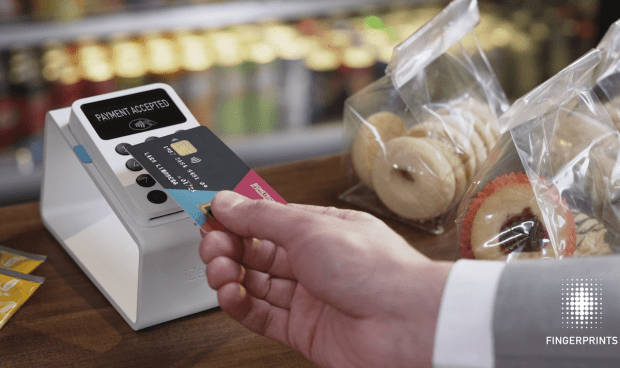Biometric Payment Cards Make a Comeback in Europe

From tap-to-pay debit and credit cards to mobile smartphone wallets, contactless methods have been driving new waves of innovation in payments post-pandemic, buoyed by growing consumer demand for flexible, convenient and touchless transactions.
Biometric payment cards, what Michel Roig refers to as contactless 2.0, promise to take things up a notch and improve the card user experience, enabling consumers to validate a payment transaction, regardless of the amount, with a single press of their finger.
That ability to remove the limit on payment transactions and standardize payment requirements regardless of where a user is based is core to biometrics’ appeal, said Roig, president of payment and access at Swedish biometrics company Fingerprint Cards.
“Depending on where you are today, if you’re over the [payment] cap, the user experience is not homogeneous,” he told PYMNTS in an interview. “It’s different across regions, countries and depending on the bank.”
But add biometrics to the mix and that problem is solved: “You’re just adding your finger to the sensor, you tap and pay and off you go … It’s an improvement [from standard contactless cards] and that’s why we call it contactless 2.0,” he explained.
And it might not take much more to convince consumers. Roig pointed to research that shows a strong consumer appetite for biometric technology, with an increasing number of them willing to either pay for fingerprint-enabled cards or switch banks to access one.
“The current consumer demand is there,” he noted. While legacy banks may be slow to adopt biometric technology, Roig believes that the combination of consumer-centric demand and adoption by FinTechs and challenger banks with fuel uptake going forward.
Toward a Frictionless, ‘Almost Zero-Cost’ Enrollment Journey
While banks have been holding back on biometric payment investments, Roig said an increasing number of financial institutions (FIs) are beginning to see the true value in the cards that incorporate fingerprint scanners, leading to a significant uptake in the last few years.
“The fact that we’ve moved from almost no launches before 2022 to now having 13 banks that have launched is a big testament to [the potential of] our technology. And I think we will continue to see that growth trajectory this year,” Roig noted.
But despite the growing potential for biometric card adoption, he acknowledged that the high-cost barrier has to be overcome for biometric payments to really ignite and reach critical mass, particularly among FIs that do not yet see biometrics as a “revenue generator.”
Another challenge that needs to be tackled to increase the penetration rate of these innovative cards is eliminating friction from the enrollment process.
Basically, compared to a contactless card that is ready to use with a PIN code once activated, a biometric card requires an additional step to safely capture user data via the card fingerprint sensor.
The first banks that have launched are mostly conducting this enrollment process in-branch, but as Roig argued, a shift to home enrollment would help to make the process faster and more seamless, all while keeping costs low for FIs.
“We’re working to find a frictionless, almost zero-cost enrollment journey … and when that final barrier is broken down, there’ll no longer be any hurdles [to adoption],” Roig said.
Moving forward, he said, instead of focusing on increasing the volumes of biometric cards in circulation, the focus would rather be on getting more banks in different regions to commercially launch the cards.
That will lead to a snowball effect, Roig said, because “if you have one bank in one country [adopting], typically the rest will follow.”
For all PYMNTS EMEA coverage, subscribe to the daily EMEA Newsletter.

